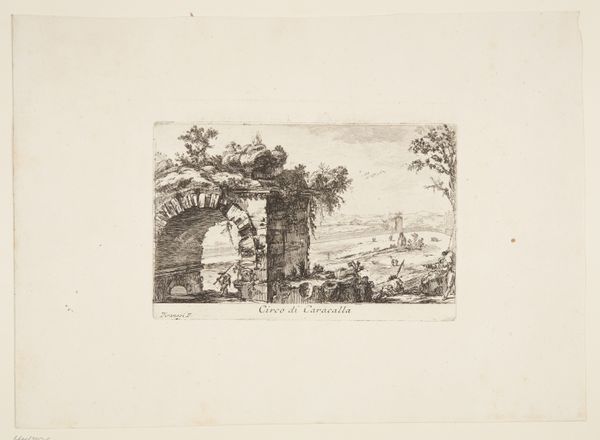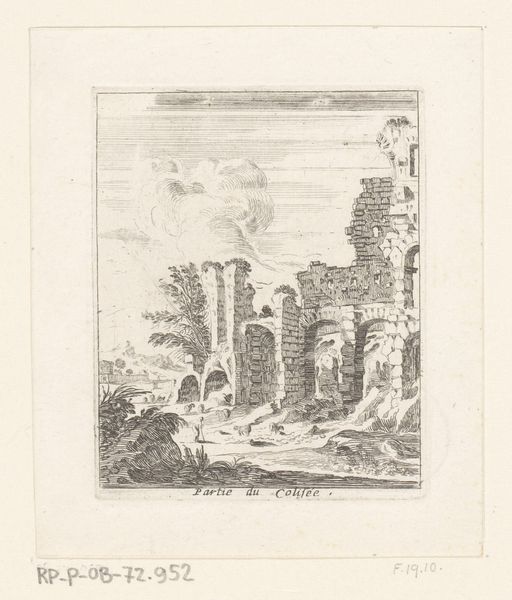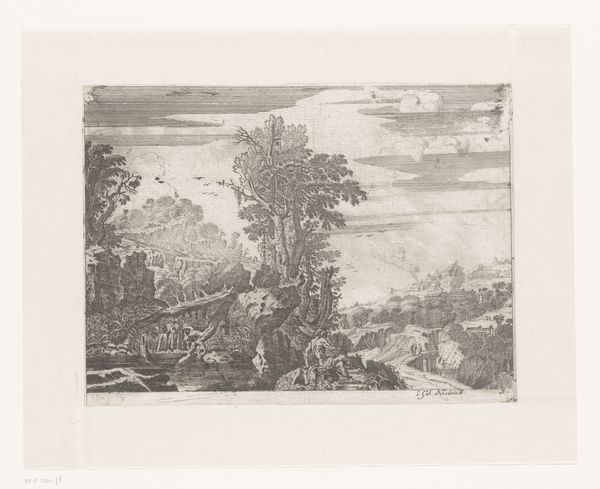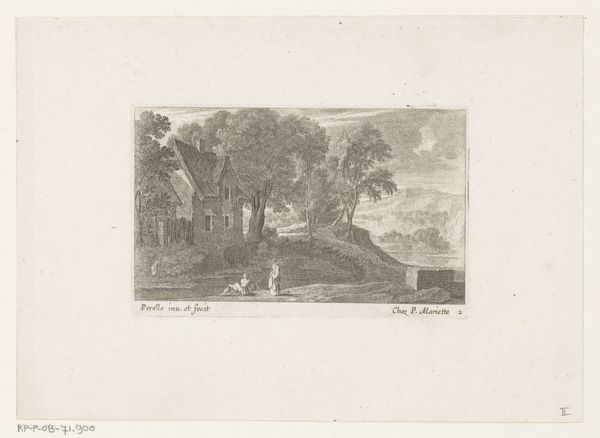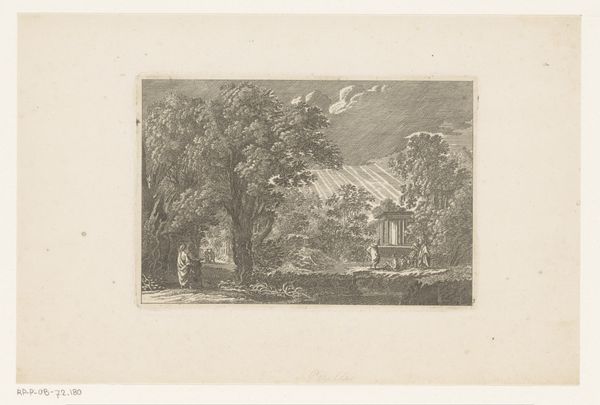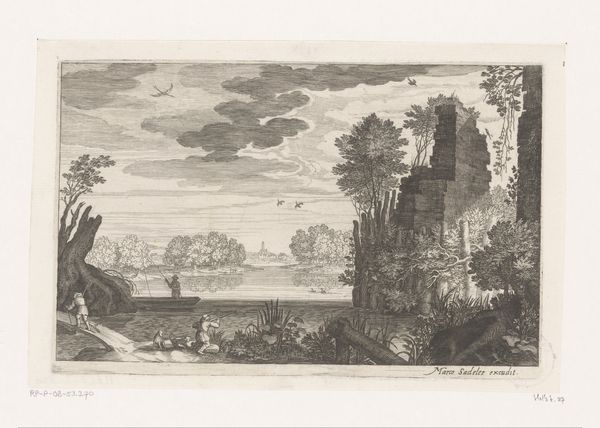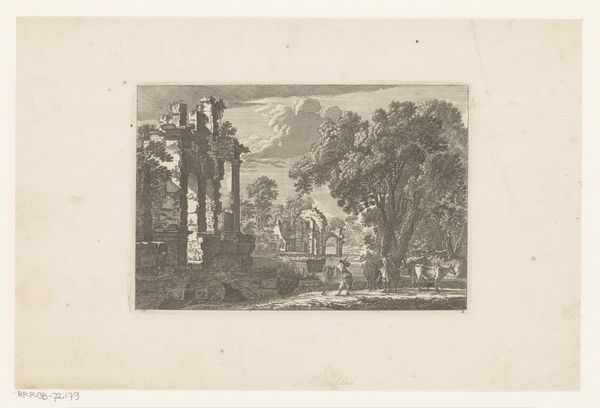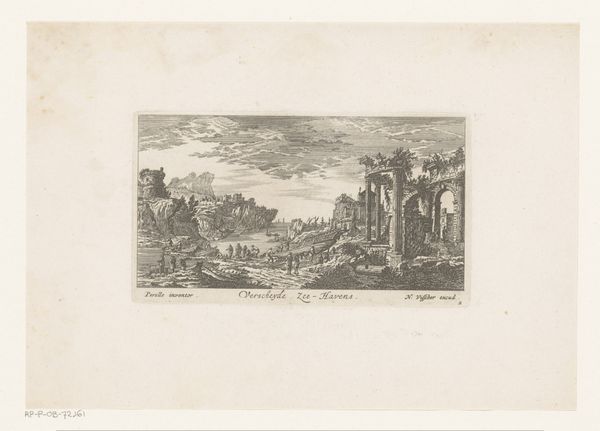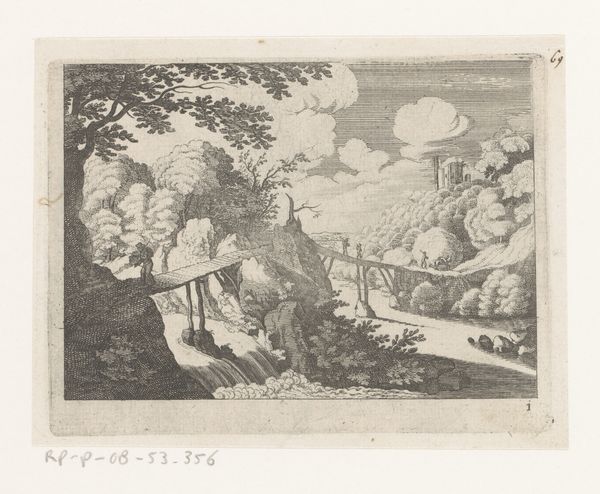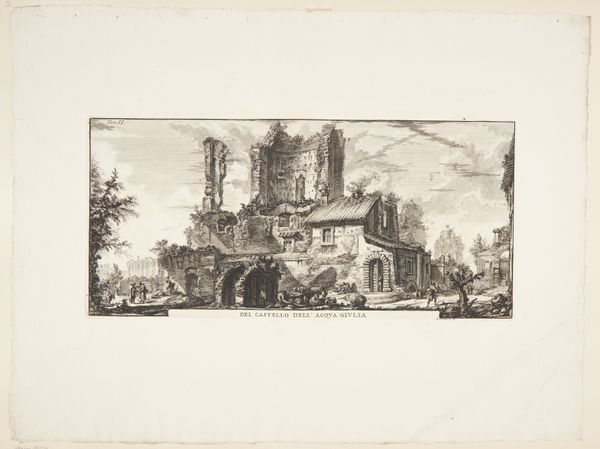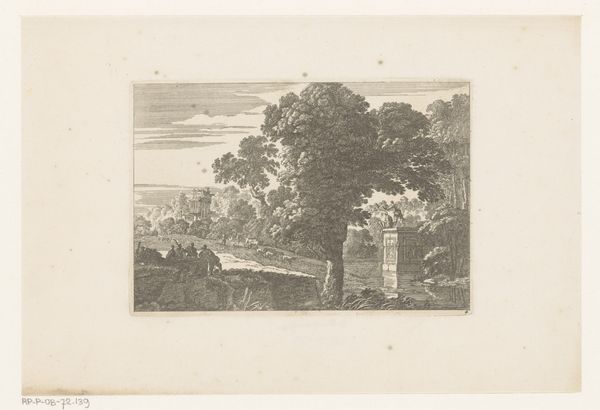
print, etching, engraving, architecture
#
ink painting
# print
#
etching
#
landscape
#
romanesque
#
cityscape
#
engraving
#
architecture
Dimensions: 593 mm (height) x 445 mm (width) (bladmaal), 212 mm (height) x 400 mm (width) (plademaal)
This etching of an aqueduct was created by Giovanni Battista Piranesi in the 18th century. The eye is immediately drawn to the aqueduct, which dominates the composition and creates a sense of depth through linear perspective. The use of light and shadow adds drama, highlighting the aqueduct’s decay. Piranesi masterfully uses the etching technique to convey both grandeur and decay. The aqueduct itself, a symbol of Roman engineering and power, is rendered in a state of ruin. This juxtaposition speaks to a broader theme that we see in Piranesi’s work: the transience of human achievement and the inevitable return of nature. The crumbling stones and overgrown vegetation present a visual semiotic system to interpret the passage of time. Ultimately, the power of this work lies in its ability to evoke a sense of melancholy through the depiction of architectural forms. It is not just a representation of a place but a meditation on history, memory, and the sublime power of nature.
Comments
No comments
Be the first to comment and join the conversation on the ultimate creative platform.
